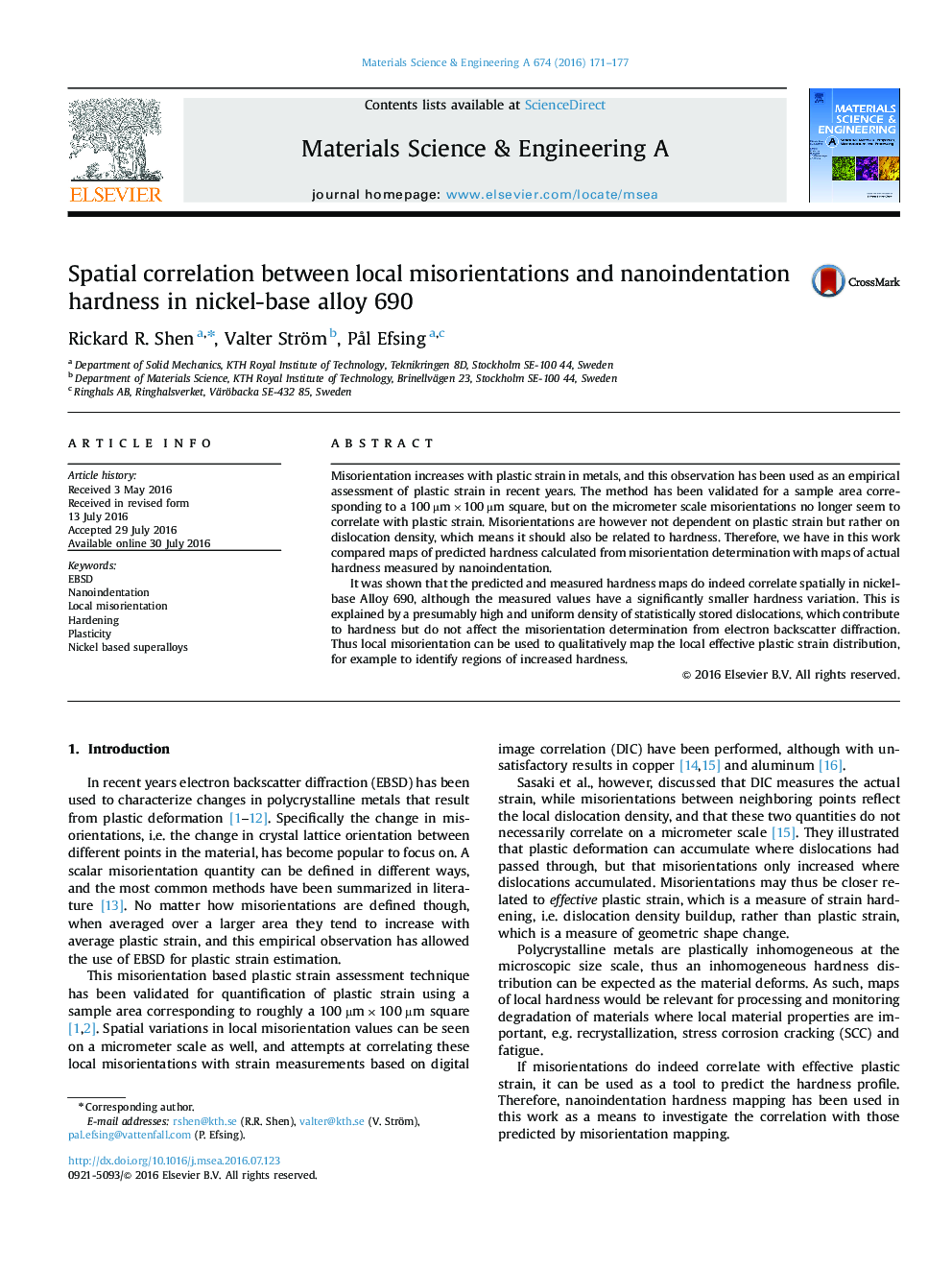| Article ID | Journal | Published Year | Pages | File Type |
|---|---|---|---|---|
| 7974894 | Materials Science and Engineering: A | 2016 | 7 Pages |
Abstract
It was shown that the predicted and measured hardness maps do indeed correlate spatially in nickel-base Alloy 690, although the measured values have a significantly smaller hardness variation. This is explained by a presumably high and uniform density of statistically stored dislocations, which contribute to hardness but do not affect the misorientation determination from electron backscatter diffraction. Thus local misorientation can be used to qualitatively map the local effective plastic strain distribution, for example to identify regions of increased hardness.
Related Topics
Physical Sciences and Engineering
Materials Science
Materials Science (General)
Authors
Rickard R. Shen, Valter Ström, PÃ¥l Efsing,
